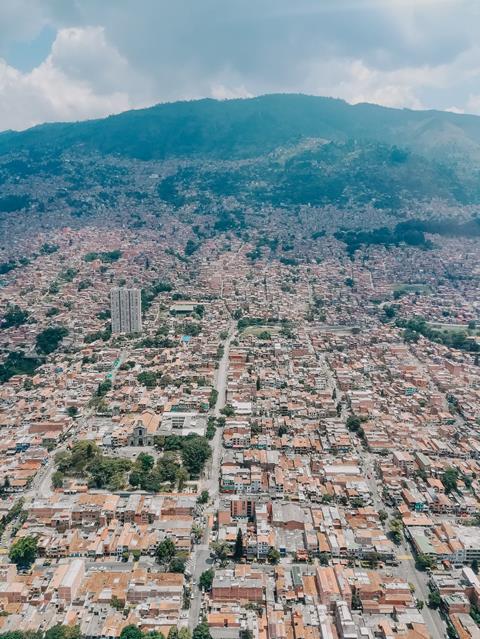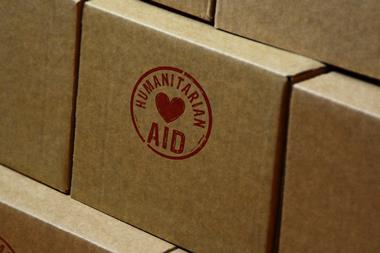Following the conclusion of the two-year Medellín Tripartite Project in Colombia, the risk industry team involved reflects on the project’s outcome, the challenges they overcame, and how the knowledge they gained on the way can help future resilience programmes
In 2018, WTW and Hannover Re joined forces with Global Communities to develop a parametric risk product to cover flooding, landslides, and earthquakes in the city of Medellín, Colombia together with the Medellín Administrative Department of Disaster Risk Management (DAGRD).
The collaboration works as a public-private partnership and sits under the umbrella of the Tripartite Agreement – an initiative between the Insurance Development Forum (IDF), the German Federal Ministry for Economic Cooperation and Development (BMZ), and the United Nations Development Programme (UNDP).
Known as “the Medellín Project”, the partners worked together towards enhancing urban resilience in Medellín through insurance protection for climate risks and natural disasters.

The challenge
Colombia sits high up on the list of climate-vulnerable countries, with approximately 84% of its population at risk of at least two climate-related hazards, including floods, and landslides.
In fact, 56.8% of economic losses in Colombia are caused by floods, 11.3% by earthquakes and 8.3% by landslides.
For densely populated cities such as Medellín, these risks are especially acute due to its landscape and climate, which is characterised by mountainous terrain and highly variable rain patterns.
The IDF said: ”Given this high risk of flooding and landslides, Medellín’s capacity to protect and support its residents with emergency response measures is crucial. In this context, quick access to finance to fund such efforts plays an important role and can be strengthened through pre-arranged finance mechanisms.”
The solution
Against this background, the goal of the project was to increase the city’s financial resilience to climate risks and natural disasters through natural disaster risk insurance products, in particular parametric insurance.
Parametric insurance products pay out pre-agreed pay-out amounts to the policyholder if a “trigger” is exceeded by a hazard event.
The triggers aim to capture hazard characteristics (e.g., the amount of rainfall in a certain location over a given time period) which are likely to cause significant damage and are linked to specific pay-out amounts which are based on the pre-defined financial needs and capacities of the policyholder.
Dr. Jamie Pollard, associate director – climate and resilience hub – WTW, said: “Developing a tailored parametric product to support disaster risk management in Medellín relied fundamentally on continuous technical conversations with the DAGRD.
”The goal of the project was to increase the city’s financial resilience to climate risks and natural disasters through natural disaster risk insurance products, in particular parametric insurance”
”This was crucial to ensure that the product was designed in a way that made best use of local datasets and captured key threats to the city while responding to the DAGRD’s emergency response needs.”
With the government of Medellín as the prospective policyholder, a parametric policy would ensure that payments could be generated rapidly after a predefined trigger had been met and without a lengthy ex-post damage assessment.
This results in faster payouts, which DAGRD can use flexibly, for example for critical infrastructure repairs or the distribution of emergency relief items to affected communities.
Focused specifically on urban protection against natural hazards, this type of parametric product is the first of its kind in Colombia.
Key challenges along the way
The partners collaborated to find creative solutions to several challenges, many of which are common to the development of parametric disaster insurance solutions in climate-vulnerable country contexts where insurance markets are still being built in a global effort to close the protection gap.
The main challenges focused on data availability and regulatory requirements.
Identifying an appropriate trigger for flooding, landslide, and earthquake impacts requires an analysis of historical data (including damage and losses) from previous events.
Due to the unique landscape and climate of Medellín, satellite data would not be detailed enough to develop a sufficient understanding of the risk.
”A change in approach was agreed upon, focusing instead on using local data from the ground to develop a product that was more suitable to the Medellín context.”
Through detailed discussion with the DAGRD team, a change in approach was agreed upon, focusing instead on using local data from the ground to develop a product that was more suitable to the Medellín context.
This new approach involved making use of data from several sources, including verbal accounts, seismic information from the Colombian Geological Service, and rainfall data from the Aburrá Valley Early Warning System (SIATA).
The project team also worked to address regulatory requirements associated with the marketing and supply of the product: in Colombia, regulation for parametric products outside of the traditional agricultural insurance market, is relatively new.
Potentially, Medellín could explore the introduction of the product as one of the first use cases.
Another aspect of the marketing approach is the form of risk transfer.
”The financial derivative as a ISDA swap would use the same underlying parametric model but benefit from a reduced tax load”
In this context, as representatives from Empresas Publicas de Medellín (EPM) indicated towards the concluding stage of the product development that the risk transfer could take the form of a financial derivative instead of a parametric insurance, the project team incorporated this alternative concept.
The financial derivative as an ISDA swap would use the same underlying parametric model but benefit from a reduced tax load. As such, the “go-to-market” strategy will also have to address the existing regulatory environment.
“We highly value this project’s collaborative approach that brought together public authorities, an international NGO, a broker and a reinsurance company,” said Miguel Guarin, general manager of the Hannover Re Bogotá Representative Office.
“It demonstrates how all project partners contribute their unique strengths to reach the best possible result. Blending local and international experience as well as being open-minded also were important elements as we moved from a vision to execution.”
Key successes
Alongside several opportunities for furthering the development of a new parametric product in a still-growing market, the project has also helped strengthen links between the insurance sector and the needs of the district.
For one, the insurance industry now understands local barriers (regulations/lack of data) to developing risk transfer products and ultimately has the knowledge and skills to overcome these challenges in future.
In addition, the project has also helped the city of Medellín enhance its technical capacities and ability to manage and acquire new parametric and insurance products.
It has helped promote knowledge sharing and has helped raise awareness about risk transfer solutions, whilst also enabling the City of Medellín to manage its own risk.
“The parametric product we have co-developed with the Medellín municipality demonstrates the complementary role of disaster risk financing as part of a broader disaster risk management strategy”
Finally, by using local information from the Aburrá Valley Early Warning System the team has successfully innovated and created a parametric coverage for flood, landslides, and earthquake risks, which is tailored to the unique and complicated needs of the Medellín District.
Depending on DAGRD’s perspective, the product can now be carried forward or enhanced by including some additional detail to allow further needs-tailoring before market placement.
Juan Diego Fajardo, Commercial Manager – WTW Colombia, said, “The parametric product we have co-developed with the Medellín municipality demonstrates the complementary role of disaster risk financing as part of a broader disaster risk management strategy.
“Replicating this integrated approach in other cities represents a key step towards building resilience to climate-related risks.”
Five lessons learned
This project highlighted five key lessons to take forward for future resilience projects:
- Collaboration, built on in-person interaction, with local actors/offices is key
- Understanding the dynamics of public administration is critical to designing compliant insurance products
- Centralised and organised databases on historical climate hazards are incredibly valuable, while strategies to overcome shortfalls to some extent can be found
- Building a “common language” understood by everyone is central to success
- Flexibility, for example in the context of newly emerging data or political environments, is as important as innovation
While the product designed and developed for Medellín is unique and tailored to its own needs, the lessons learned can be applied new projects and initiatives that aim to improve risk management for those most at risk of natural hazards globally.
The IDF and partners are planning to share additional perspectives and potential next steps under the Tripartite Agreement overall in the context of COP28.




















No comments yet